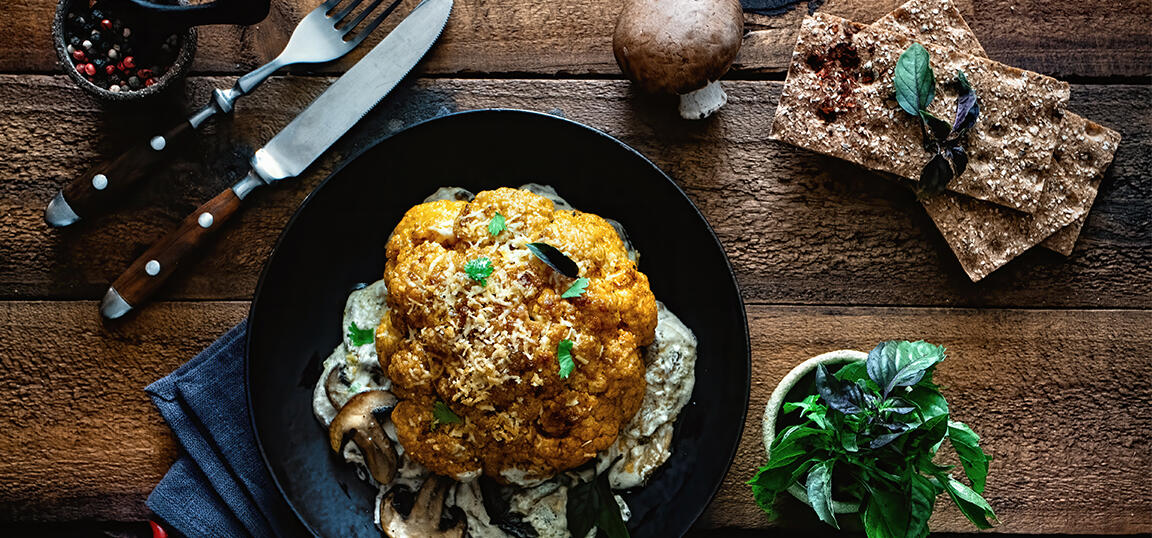
A cut above
From succulent steaks to indulgent roasts – beef’s versatility makes it the choice of many meat lovers. But if you’re not sure of your T-bone from your topside, take a moment to study our handy guide to beef cuts…
We know great-quality beef comes from happy herds that are properly raised and given plenty of care and room to graze.
When you get that combination right, you get cows that give cut after cut of tasty beef. Each of those cuts has different qualities and should, therefore, be prepared and cooked in the right way to bring out the best flavours and textures. So, if you don’t know your sirloin from your silverside (and you’re definitely not alone), this is the guide for you.
Brisket
Most commonly sold boned and rolled as a full joint, brisket can be incredibly tender and flavoursome when it’s slow roasted. It comes from the chest area between the cow’s shoulders and has a large amount of marbled fat throughout, which needs time to melt during cooking. Get it right and you end up with the beef equivalent of pulled pork – delicious, tender strands of meat.
Chuck steak
Chuck steak comes from around the shoulders and, as one of the hardest-working areas of the animal, the meat can be tough. For this reason, it’s economical and is often sold pre-diced, perfect for popping into a stew, casserole or pie. Recipes with long cooking times bring out the best of this cut, so dust off that slow cooker!
Fillet
Fillet steak is famous for a reason. Coming from the lower middle of the cow’s back, it’s incredibly tender and contains little fat. For best results cook it quickly over a high heat to stop the meat from drying out. This makes it perfect for quick mid-week dishes.
Onglet
Never heard of onglet? Popular in France, but less so in the UK, it’s found in the lower belly, making it satisfyingly chewy with a very meaty flavour. Onglet can be tough, so needs to be cooked with care. Either pan-fry it quickly and serve rare, or slow cook to make the most of the flavour.
Rib-eye steak
Rib-eye gets its name from the ‘eye’ of fat in the centre. It’s taken from just above the ribs and is very tender and rich. Rib-eye steaks are usually served at least medium, to give time for the fat to melt into the meat.
Rump
Superb for skewers and kebabs, this cut comes from the backside of the cow. It’s tender enough to be quick fried and served rare, and works brilliantly with a marinade or sticky sauce.
Shin
As it comes from the foreleg of the cow, shin has ribbons of tissue and gristle running through it, which give it a bad reputation for chewiness. However, with some slow cooking and paired with a great marinade, it can make a delicious and economical dish.
Silverside
Silverside gets its name from the silvery tissue covering one side of the joint. Taken from just above the leg, it’s a very lean cut and, when roasting, it should be basted or partly submerged in liquid to lock in the tenderness.
Sirloin
Sirloin is similar to rib-eye in that it needs some cooking time for the fat to melt into the meat. It comes from between the fillet and ribs and offers the perfect balance of fat and tenderness, which means you’ll often find it on a restaurant menu.
Skirt
Cornish pasties famously use beef skirt to help create the delicious gravy. Skirt is similar to onglet and found on the lower belly and ribs. It can withstand a marinade or sauce with some kick, so is also often found in Mexican dishes.
T-bone
Funnily enough, T-bone steaks are always served on the bone, which is shaped like a T! One side has a piece of sirloin and the other a smaller piece of fillet, which give it variety and texture. Keeping the bone in provides a great flavour boost but it can be tricky to cook. Try searing in a pan, then popping in the oven for an even finish.
Topside
Often sold as a roasting joint, topside comes from the inner thigh. This is one of the simplest and most forgiving cuts to cook and serve, which is why you’ll often find it in a Sunday roast. It’s great for a large lunch when you don’t want to spend all day in the kitchen.





